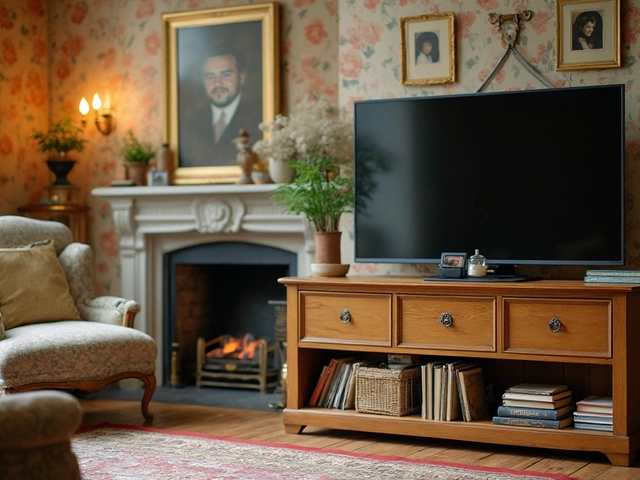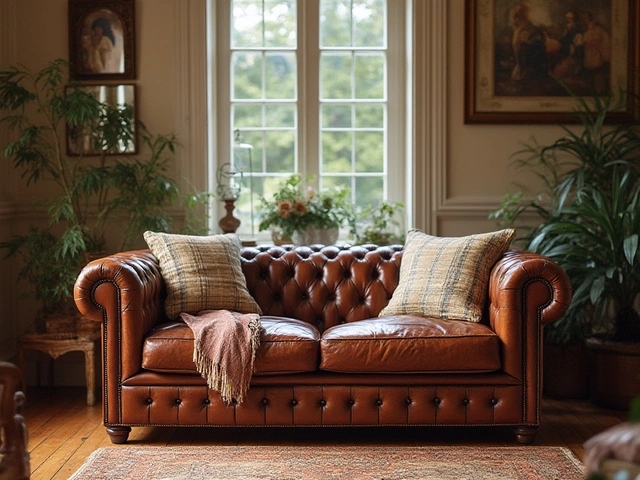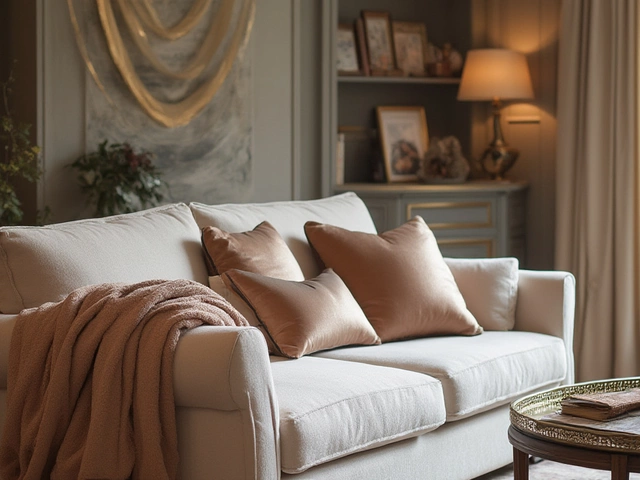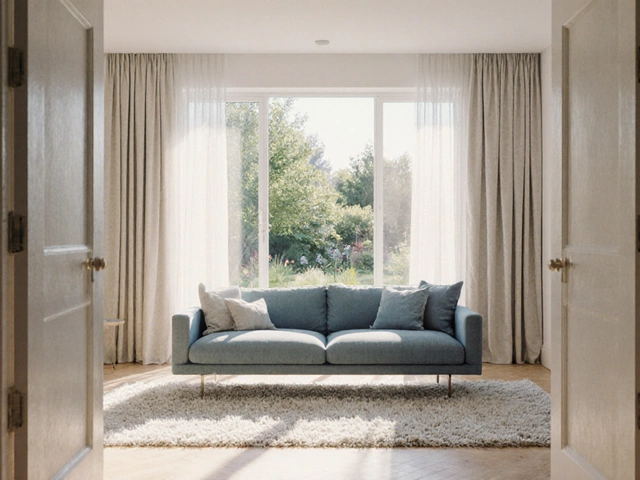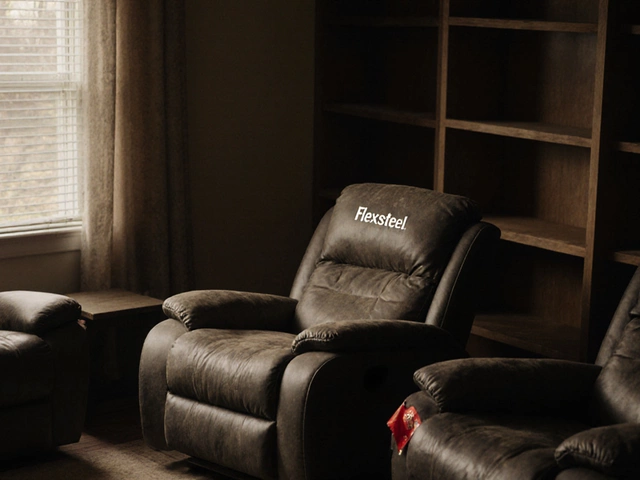If you've ever found yourself stumped at a furniture store or scrolling through endless online listings, you've probably noticed that 'sofa bed' isn't the only name out there. Suddenly, you're seeing 'sleeper sofa,' 'daybed,' 'futon,' and 'convertible couch,' and you're left wondering—are these all the same thing, or are you about to buy something totally different?
The truth is, people use all sorts of fancier names for sofa bed, sometimes to sound a bit more upscale, or just to describe how a particular model works. Knowing these names isn't just about showing off at parties (though, trust me, it does come in handy during those awkward silences). It can actually help you find exactly what you want, avoid buying the wrong style, and even score a better deal because you know what to search for. Nothing's worse than thinking you ordered a fancy-sounding 'convertible settee' only to get something that barely fits a kid for sleepovers.
- What Is a Sofa Bed, Really?
- The 'Fancy' Alternatives You’ll Hear
- Why Use a Fancier Name?
- Choosing the Right Sofa Bed (or Whatever You Call It)
- Common Mistakes When Shopping for Sofa Beds
- Tips for Impressing Your Friends with Furniture Lingo
What Is a Sofa Bed, Really?
A sofa bed is simply a couch that doubles up as a place to sleep. It looks and feels like your average sofa, but hidden inside is a fold-out mattress or a cushioned platform you can turn into a bed—usually in just a few steps. These things are the secret weapon for folks who want an extra spot for guests without giving up precious living space.
The most important thing to know? A sofa bed is all about versatility. The classic style is the pull-out version, where the back cushions come off and you yank out a metal frame with a thin mattress inside. You’ll spot newer designs, too, like click-clack and futon models, which just fold down with one smooth motion—no heavy lifting or wrestling with stuck hinges.
Sofa beds have been around for almost a hundred years, first hitting American living rooms back in the 1920s. Nowadays, you can find them in everything from basic apartment setups to high-end designer homes. They’re a huge time-saver when your kid’s friends decide to stay the night or when family drop in unplanned. Plus, many have hidden storage—handy for tossing in bedding or those extra throw pillows Thane seems to collect.
Just keep in mind, not every fold-out couch is created equal. The comfort can range from “not bad, actually” to “like sleeping on a pile of springs.” If you’re thinking about getting one, check how easy it is to switch from sofa to bed, what kind of mattress it has, and whether your room has enough space for it when fully open. Those little details make all the difference when you actually use it.
The 'Fancy' Alternatives You’ll Hear
Ever noticed how people toss around all sorts of names for what’s basically a sofa bed? These terms aren’t just there to make things sound posh—they usually point to how the thing works or fits into a room. But retailers and magazines love a trendy name, so you’ll see plenty of options out there.
- Sleeper Sofa: This is probably the most common substitute for sofa bed, and you’ll see it everywhere in catalogs. It usually means a sofa with a mattress hidden inside that pulls out for sleeping.
- Daybed: A daybed looks more like a twin bed with an extra backrest. These are great for small rooms or when you want a chill spot for reading that also doubles up for sleepovers.
- Futon: The original futon comes from Japan. Unlike bulky sleeper sofas, a futon is a slim mattress that folds into a couch, then flattens out to nap mode. These are super popular in dorms and apartments.
- Convertible Couch: Anything with “convertible” means it can switch functions—so a convertible couch could click down flat or have sections that move. Sometimes these are called click-clack sofas, especially in Europe.
- Loveseat Sleeper: Smaller than your average sleeper sofa, this one’s roughly the size of two seats. Good for tight spaces or home offices that pull double duty.
- Sectional Sleeper: These are the big ones, usually with a chaise or lots of seating, then a mattress or foldout that pops out when you need an extra bed.
Not sure which is which? Here’s a quick comparison that shows how some of the most popular terms differ:
| Name | Main Use | How it Converts | Best for |
|---|---|---|---|
| Sleeper Sofa | Sitting & Sleeping | Pulls out hidden mattress | Living rooms, guest rooms |
| Daybed | Sitting & Lounging | Already bed-sized, just add bedding | Offices, small bedrooms |
| Futon | Sitting & Sleeping | Folds mattress flat | Studios, kids’ rooms |
| Convertible Couch | Sitting, Lounging, Sleeping | Back folds down or sections adjust | Multi-use spaces |
| Loveseat Sleeper | Sitting & Sleeping | Pulls out smaller mattress | Small rooms, tight spots |
| Sectional Sleeper | Sitting, Lounging & Sleeping | Larger pull-out or fold-down section | Family rooms, open spaces |
Something to keep in mind: just because a brand uses a slick name doesn’t always mean it’s top quality. Always look under the hood (well, cushions) and check the mechanism, comfort, and size before buying. That way, whether you call it a sleeper, a daybed, or a futon, you’ll actually get what you want.
Why Use a Fancier Name?
There's a pretty simple reason folks swap out 'sofa bed' for names like 'sleeper sofa' or 'daybed'—it just sounds better, especially when you're trying to sell a product or make your living space feel a bit more upscale. Walk into a showroom and you'll spot price tags using words like 'convertible couch' instead. That slick language can actually change how people see the furniture and, to be honest, how much they're willing to pay.
This isn't just about marketing hype, though. Specific names can be handy for narrowing down your options. For example, a 'futon' usually folds down flat—something a traditional sofa bed doesn't always do. A 'daybed' is often designed to double as a guest bed and a lounging spot, mostly with a twin mattress. The right name helps you skip the confusion.
Retail data shows it's not just your imagination: listings using terms like 'sleeper sofa' attract more clicks and sell faster. Companies pay attention to what customers search for online, and the fancier wording draws extra interest—sometimes leading to higher sales or better reviews.
| Name Used | Average Price (US) | Online Listing Clicks |
|---|---|---|
| Sofa Bed | $650 | 6,700 monthly |
| Sleeper Sofa | $750 | 9,500 monthly |
| Daybed | $550 | 4,200 monthly |
| Futon | $410 | 7,800 monthly |
So next time you're shopping, or just showing off your new couch at a party, tossing out the name 'sleeper sofa' instead of 'sofa bed' might actually make it sound a bit swankier. It's not about being pretentious—it's about being clear and maybe getting a little respect from the in-laws, too.

Choosing the Right Sofa Bed (or Whatever You Call It)
Picking a sofa bed for your place isn't just about what looks good. You want something that fits the space, holds up over time, and, honestly, doesn't kill your back when you sleep on it. The choices out there can get confusing fast, so let's break it down with stuff that matters.
First, measure your area—twice. People forget about opening up the bed part and end up with something that blocks the TV or pinches your toes when you walk past. Always check both the "sofa size" and the "bed size" listed in the details online or on the store tag.
Next, think about how you'll actually use it. If it's for nightly sleeping (like in a studio apartment), you want a mattress that's more than just a thin pad. Memory foam options are everywhere now. A 2024 poll by Apartment Therapy found that buyers who picked sofa beds with 4-inch memory foam mattresses reported 25% better sleep satisfaction than those who stuck with classic spring models.
Pay attention to how it converts. Some are as simple as just pulling out a bottom part, while others have more steps (and more chances to pinch your fingers). Try it yourself before you buy, or at least watch real-life video reviews. Kids and guests notice if a sofa bed is a hassle to use—Thane let me know pretty quick when the pull-out took more muscle than he had.
The covering matters too. If you've got pets or messy eaters (yep, that's basically every family), go for tough, stain-resistant fabrics. Some even come with covers that zip off for washing—lifesavers during flu season, birthday parties, or snack disasters.
Here are some quick specs to compare when you're shopping around:
| Feature | Why It Matters |
|---|---|
| Open Dimensions | Do you have enough room when it's fully open? |
| Mattress Thickness | Comfort for actual sleeping—look for 4 inches or more |
| Ease of Conversion | Can one person do it without breaking a sweat? |
| Fabric Durability | Holds up to pets, spills, and wear |
| Weight Limit | No surprises if two people end up on it |
One last thing—don't get too hung up on the name. Whether it's tagged as a "futon," "daybed," or "sleeper," focus on the features that fit your real life. If in doubt, visit a store and give it a try. As my kid once said after flopping onto fifteen different models, "You know the right one when you sit on it." Can't argue with that.
Common Mistakes When Shopping for Sofa Beds
People often make the same slip-ups when buying a sofa bed. Trust me, a little knowledge up front can save you from a couch that wobbles, a bed that sags, or worse—something nobody wants to sleep on.
One big mistake? Focusing just on style and forgetting how the thing actually works. Some sofa beds look sleek as a regular couch, but the sleeping part is a nightmare. Always check how it opens and closes. If it feels heavy or jams, imagine doing that after a long day. Some frames squeak or even bend after a few uses, especially the super cheap ones.
Another classic error: ignoring measurements. Double-check the size when it’s fully open. People often forget to make sure there’s enough space for both the bed and to walk around. I’ve seen folks cram a sleeper into a room, only to find out you can’t fit by the foot of the bed without bumping into something.
A lot of shoppers overlook the mattress part. Not all sofa beds have the same type or thickness. Some come with thin foam slabs that feel awful after two nights. If you’re planning for real guests—not just Thane’s sleepover buddies—spring for a model with a legit mattress and see if reviews mention how it holds up.
Check the fabric and build, too. Some looks are in one season and out the next, but basic durability never goes out of style. Easy-to-clean covers matter more than you think, especially if you’ve got kids, pets, or snack accidents.
- Test the sofa bed in-store for comfort as both a sofa and a bed
- Measure your space for both closed and open positions—don’t guess
- Ask about return policies, because not every sleeper works for every room
- Read reviews on how the bed mechanism holds up over time
The last thing you want is a couch that nobody sits on and a bed that nobody plans to sleep in. Doing just a little homework makes sure your next sofa bed is more than just a place to drop your stuff.
Tips for Impressing Your Friends with Furniture Lingo
Throwing out the right words at the right time can make you sound like you know your stuff—even if you just bought your first couch yesterday. When someone asks about your new piece, don’t just call it a ‘couch that turns into a bed.’ Drop the real names and maybe even a detail or two. Here’s how to pull it off:
- Sleeper sofa: Try this one when your guests sit down and get comfy. Toss out, “That’s actually a sleeper sofa, it’s great for unexpected overnighters.”
- Convertible couch: If your model has those click-clack mechanisms, call it a convertible couch or convertible sofa. This pinpoints models that don’t fold out like a traditional mattress.
- Daybed: Mention if your piece is stylish enough to be used as a lounge or a bed. Daybeds usually work best for napping or as a chill reading nook.
- Futon: This word came over from Japan. If your sofa is lightweight and folds flat easily, you’ve got a futon. Cool fact—futons were designed to be aired out daily, which is way more common back in Japan than here.
- Sectional sleeper: Have a sofa bed with a chaise or extra seating? You can say, “It’s a sectional sleeper,” which is definitely a step up on the impress-o-meter.
Quick cheat sheet for the next dinner party:
| Lingo | What It Actually Is |
|---|---|
| Sleeper sofa | Couch with a pull-out mattress (the classic sofa bed) |
| Convertible couch | Sofa that folds down flat, but not always with a hidden mattress |
| Futon | Foldable bed, usually lighter, the whole thing becomes a bed |
| Daybed | Bed that doubles as a sitting area |
| Sectional sleeper | L-shaped sofa with a built-in bed |
For extra credit, sprinkle in a fact about the first sleeper sofas popping up in 1931 courtesy of Bernard Castro, who made them a thing in New York. Most people have no clue that sleeper sofas have been around nearly a hundred years.
If you want to feel clever, just use these names when you’re online shopping, too. Retailers often have wildly different names for the same thing, and tossing in the right lingo will get you to the good stuff faster.

